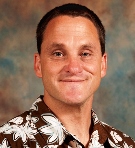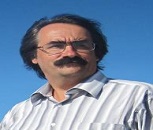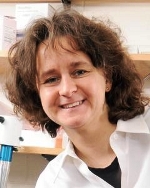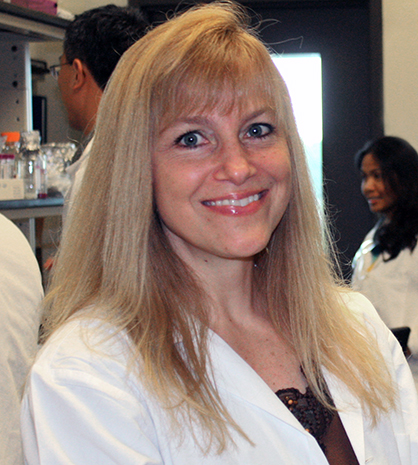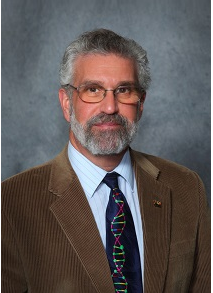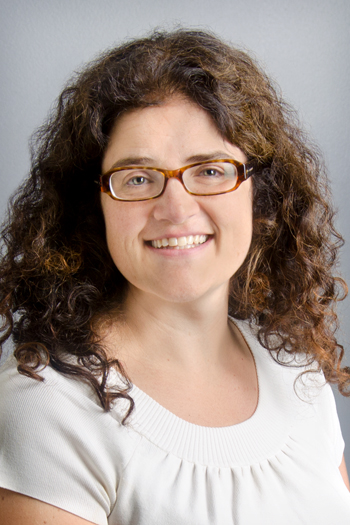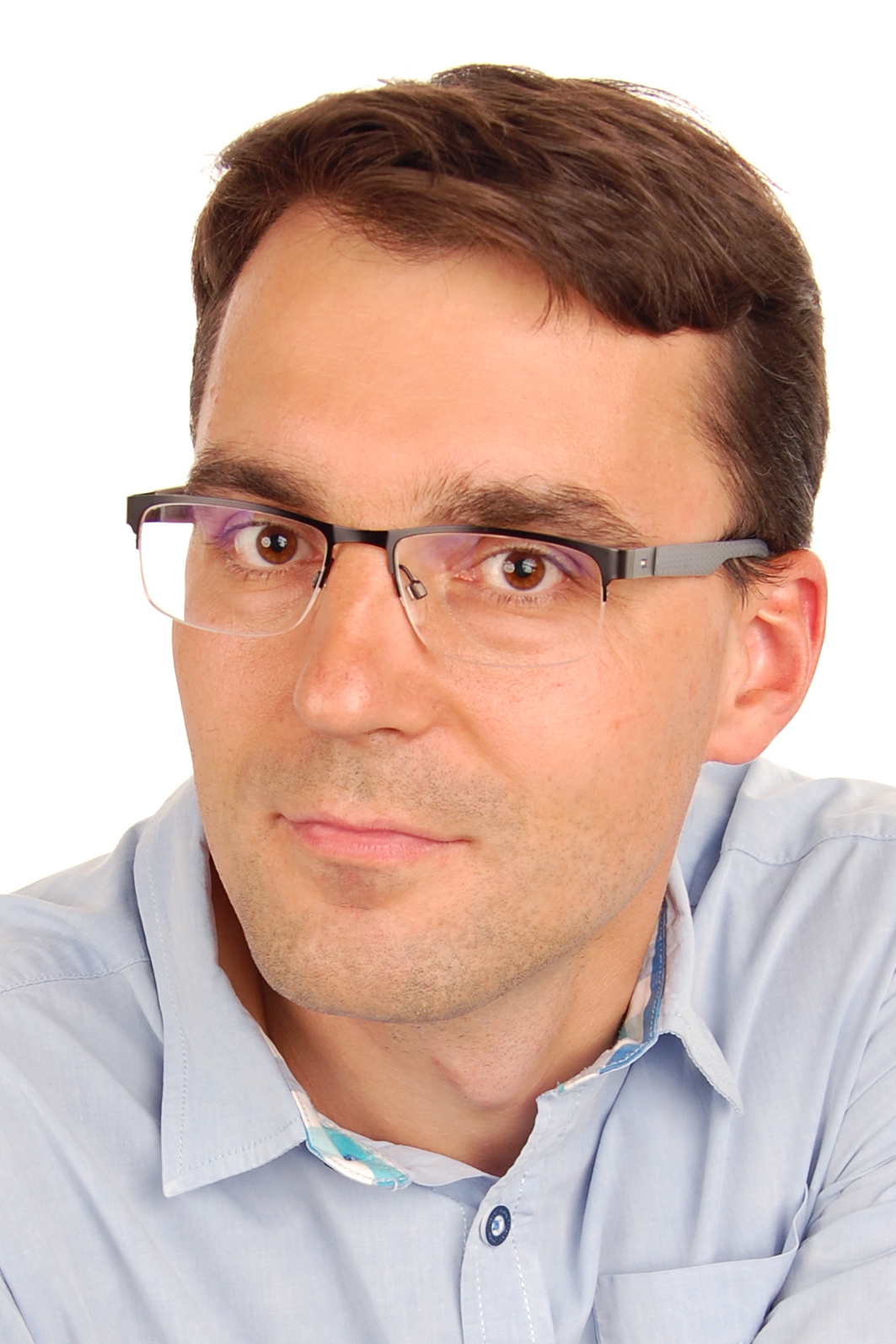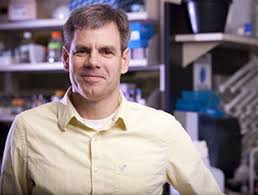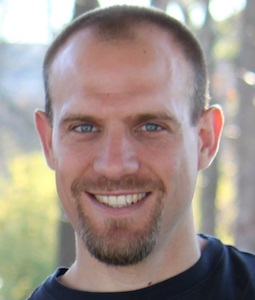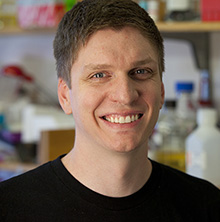Theme: Let’s decode the "PUZZLE" of Life
Nucleic Acids 2019
Conference Series LLC LTD is pleased to invite the contributors across the globe on its "4th International Conference on Molecular Biology & Nucleic Acids" which is scheduled at Chicago, USA during October 07-08, 2019.
4th International Conference on Molecular Biology & Nucleic Acids conference gives a chief stage to introduce and examine key disclosures in molecular biology, nucleic acids which have impacted nearly every facet of biology with wide-ranging implications for human well-being. The overarching long-term goal of this conference is to create a scientific environment conducive to cross-disciplinary talk and trade of new thoughts by bringing together the world's leading analysts with junior researchers, to enhance our understanding of the role of nucleic acids in biology, human health, and disease. Specific topics will include: Molecular Biology, Chemical Biology and Nucleic Acid Chemistry, DNA Replication and Genome Integrity, RNA/DNA Structure and Dynamics, Chromatin and Transcription, RNA/DNA in Cellular defence, Computational Biology, RNA/DNA Conflicts, Non-Coding RNAs, and Mechanisms of Signal Transduction, and special aspects of Molecular Medicine. The Nucleic Acids Conference is unique in bringing the RNA and DNA fields together in the field of Molecular Biology.
This Conference will provide a perfect platform for addressing below highlights:
Molecular Biology and Molecular Genetics
DNA transcription, replication, and segregation
Genome Dynamics and Mutagenesis
Genome integrity and Chromosome dynamics
Human Statistical Genetics
Stem cells, Aging, and Cancer
Molecular Engineering & Modelling
DNA Damage and Repair
RNA Editing and Interference
RNA and DNA Nanotechnology
Recombinant DNA Technology
RNA Processing and Protein Synthesis
Alternate Nucleic Acid Structures
Computational Molecular Biology
Personalized Medicine
Advancements in Genetic Diseases
About Chicago:
Welcome to Chicago, a city with many colors and joy. Chicago is one of the largest and busiest cities in the United States of America. Having a wide range of attractions and famed for its bold architecture, with a population around 2,695,598 and rank 3rd largest city in the USA. Chicago contributes the third largest gross metropolitan product in the United States at US$571billion. With over 2.8 million residents, it is known to be the most populous city in the state of Illinois and the Midwest.
Chicago is known to be the third most populous city in the United States. The city is equipped with an international hub for finance, commerce, industry, technology, telecommunications, and transportation; with O'Hare International Airport being the busiest airport in the world. Chicago was known and listed as an alpha global city by the Globalization and World Cities Research Network. Chicago is being recognized as the major world financial center, with the second largest central business district in the USA.
The city is famous and also renowned for its museums, including the Art Institute and its wide expansive collections, including noted Impressionist works. Chicago is one of the major transportation hubs in the United States. It is an important contributor to global distribution, as it is the third largest inter-modal port in the world after Singapore and Hong Kong.
For more details e-mail us at molecularbiology@americameetings.net
Conference Series LLC Ltd is organizing Molecular Biology & Nucleic Acids in 2019 in Chicago, USA. We organize Biochemistry Meetings in the fields related to Enzymology, Epigenetics, Protein Engineering, Antibody Engineering, and Industrial Biochemistry like Structural, Molecular, Cell, Plant, and Animal.
Details of Molecular Biology & Nucleic Acids 2019 in Chicago:
| Conference Name | Place | Date |
|---|---|---|
| Nucleic Acids 2019 | Chicago, USA | October 07-08, 2019 |
Past Conference Report
Molecular Biology & Nucleic Acids
We gratefully thank all our wonderful Keynote Speakers, Speakers, Conference Attendees, Students, Organizing Committee Members, Associations, Sponsors, Exhibitors and Media Partners for making Molecular Biology & Nucleic Acids 2018 Conference the best ever!
The 3rd International Conference on Molecular Biology & Nucleic Acids, hosted by the Conference series LLC Ltd was held during August 27-28, 2018 at Toronto, Canada based on the theme “The Blueprint of Life”. Benevolent response and active participation was received from the Organizing Committee Members along with Scientists, Researchers, Students and leaders from various fields of Biochemistry, Molecular Biology, Nucleic acids, medical groups, related associations, societies and also from government agencies, pharmaceutical, biomedical and medical device industries.
Conference series LLC Ltd expresses its gratitude to the conference Moderators, namely Isabel Strohkendl, Marina Bellani and Francesca Storici for taking up the responsibility to coordinate during the sessions. We are indebted to your support.
Similarly, we also extend our appreciation towards our Chairs and Co-Chairs of the sessions for 2 days, to ensure the smooth proceedings of their respective sessions.
The conference was initiated with the Honourable presence of the Keynote forum. The list includes:
- Francesca Storici, Georgia Institute of Technology, USA
- Razvan Chereji, NICHD, NIH, USA
- F. Brad Johnson, University of Pennsylvania, USA
- Dipankar Sen, Simon Fraser University, Canada
- Jean-Yves Masson, Laval University Cancer Research Center, Canada
- Hamid Mirzaei, UT Southwestern Medical Center, USA
The meeting reflected various sessions, in which discussions were held on the following major scientific tracks:
Molecular Biology
Genome Dynamics and Mutagenesis
Human Statistical Genetics
Molecular Engineering & Modelling
Molecular Genetics
DNA Replication & Recombination
DNA Damage and Repair
RNA Editing and Interference
RNA and DNA Nanotechnology
Recombinant DNA Technology
RNA Processing and Protein Synthesis
Alternate Nucleic Acid Structures
Computational Molecular Biology
Personalized Medicine
Advancements in Genetic Diseases
Single-Molecule Analysis
A very special Thanks to our Sponsors, Ad-Sponsor and Exhibitors to have bestowed and their faith in collaborating with us to make this event a fruitful one. We hope you continue your support in our future endeavors.
Special Thanks:
Conference Series LLC Ltd. offers its heartfelt appreciation and thanks to our Organizing Committee Member Dr.Robert M.Brosh Jr., (National Institute on Aging, NIH, USA) who supported and actively organized the conference by promoting in various modes online and offline which helped the conference reach every nook and corner of the globe.
With the grand success of Molecular Biology & Nucleic Acids, Conference Series LLC Ltd is proud to announce the “4th International Conference on Molecular Biology & Nucleic Acids” October 07-08, 2019 at Chicago, USA
For More details visit: https://nucleicacids.conferenceseries.com/
Session 1: Molecular Biology and Molecular Genetics
Molecular biology is a branch of biology that describes the molecular basis of biological activity between biomolecules in the various biological systems of a cell, including the interactions between DNA, RNA, proteins and their biosynthesis. Molecular genetics is the field of biology that basically studies the structure and function of genes at a molecular level and thus focusses methods of both molecular biology and genetics. This is beneficial in the study of developmental biology in understanding & treating genetic diseases.
Session 2: DNA Transcription, Replication, and Segregation
DNA Replication which is the basis of biological inheritance starts with the division of a cell into two daughter cells and in this process a double-stranded DNA molecule is copied to generate two identical copies of DNA. Researchers are continuing with genome-wide studies in DNA Replication which is resulting in may novel research. Many Universities worldwide are carrying out researches in the field of DNA Replication and Genetic Recombination. Being specific are The Penn State University, The Rockefeller University, Massachusetts General Hospital, University of Washington where many capable and talented Scientists are working in this field.
Session 3: Genome Dynamics and Mutagenesis
The research focusses on DNA replication origins, describing the ways and procedures how they are specified and regulated during the cell cycle on homologous recombination during meiosis, including telomere and centromere structure and function and on the regulation of the activities of transposable elements by non-coding RNAs. It also describes how the genetic information is read throughout the regulation of gene expressions.
Session 4: Genome integrity and Chromosome Dynamics
Genome integrity is essential for organism survival and for the inheritance of other traits to their offspring’s. Genomic instability is generally caused by DNA damage, aberrant DNA replication or irregular cell division, which generally lead to chromosomal aberrations and other gene mutations.
Session 5: Human Statistical Genetics
Human Statistical genetics is a modern day scientific field focussed on the development and application of statistical methods for drawing inferences from genetic data in various studies. Statistical genetics is the study of genetic variation and it is focussed and concerned with the analysis of genetic data basically human. Statisticians play an important and vital role in the analysis and the design of genetic studies. Statistical genetics overlaps with fields such as bioinformatics, biomathematics, biology, epidemiology, genetics, etc. Scientists and researchers in this field have worked and are working on methods in linkage analysis, allelic association tests, gene statement array data analysis, sequence analysis, comparative genomics, and phylogenetic tree reconstruction, etc.
Session 6: Molecular Engineering & Modelling
Molecular engineering involves the creation of molecules & the development of new products from them. Molecular engineering is highly interdisciplinary by nature, encompassing aspects of chemical engineering, bioengineering, materials science, electrical engineering, mechanical engineering, physics, and chemistry. The field is particularly important for scientific materials research & pharmaceuticals, as it is employed as a sophisticated form of chemical engineering. Molecular engineering is a dynamic & evolving field with complex target problems; breakthroughs require sophisticated and creative engineers who are conversant across disciplines.
Molecular modeling includes all theoretical, methods and computational used to model or mimic the behavior of molecules. The methods are used in the fields of drug design, computational biology, computational chemistry & materials science to study molecular systems ranging from small chemical systems to large biological molecules and material assemblies. Quick calculations can be achieved by hand, but inevitably supercomputers are required to perform molecular modeling of any reasonably sized system. The common feature of molecular modelling methods is the atomistic level description of the molecular systems. This may include treating atoms as the smallest individual unit or explicitly modelling electrons of each atom.
Session 7: DNA Damage and Repair
DNA is known to be a highly stable and versatile molecule. Though sometimes some damages are caused to it, it is able to maintain the integrity of the information which is contained in it. The safeguard of genetic material from generation to generation depends upon keeping the rates of mutation at a very low level. DNA has many elaborate and efficient mechanisms to repair any damage or distortion. The most frequent sources of damage to DNA are the erroneousness in DNA replication and chemical changes in DNA. Malfunction and regulations of the process of replication can lead to incorporation of wrong bases, which are mismatched with the complementary strand. The damage causing chemicals break the backbone of the strand and lead to chemically alter the bases. Alkylation, oxidation and methylation cause damage to bases. X-rays and gamma radiations also cause single or double-stranded breaks in DNA.
Session 8: RNA Editing and Interference
RNA editing is a molecular technique through which certain cells can make discrete changes to specific nucleotide sequences within an RNA molecule after it has been generated by RNA polymerase. RNA editing has been observed in the RNA sequences of viruses, archaea, and prokaryotes. RNA editing occurs in the cell nucleus and cytosol, as well as within mitochondria and plastids. In vertebrates, editing is rare & usually consists of a minor amount of changes to the sequence of affected molecules. Two types of small ribonucleic acid (RNA) molecules – microRNA (miRNA) and small interfering RNA (siRNA) – are central to RNA interference. The study of RNA interference incudes its variation among organisms, cellular mechanisms, biological functions like up-regulation of genes, immunity, down-regulation of genes and its applications in gene knockdown, functional genomics, medicine, and biotechnology. The University of Albany situated at New York is rigorously involved towards all the novel research on RNA. The RNA Institute maintained by Dr.Paul Agris (University at Albany) is the best-known platform for carrying out RNA analysis.
Session 9: Recombinant DNA Technology
Recombinant DNA technology mainly focusses on joining together of DNA molecules from two different species that are inserted into a host organism to produce new genetic combinations that provide value to science, medicine, agriculture, and industry and also other therapeutic areas. Since the focus of all genetics is the gene, the primary and fundamental goal of laboratory research experts is to isolate, characterize, alter and manipulate genes.
Session 10: RNA Processing and Protein Synthesis
RNA splicing is a process in which introns are removed and exons are joined prior to translation. In other words, RNA splicing is a modification of the nascent pre-messenger RNA (pre-mRNA) transcript. To address the questions and other aspects of mRNA synthesis and processing, many researchers turned to the study of DNA viruses that infect animal cells in culture. RNA processing refers to any alteration made to RNA between its transcription & its concluding function in the cell. These processing steps include the removal of extra sections of RNA, specific modifications of RNA bases, and modifications of the ends of the RNA. Being Specific, The University of Manchester, Yale Center for RNA science and Medicine, Rutgers University are working in this field for bringing out many challenging results.
Protein synthesis is one of the most fundamental biological processes by which individual cells build their specific proteins. Within the process are involved both DNA & different in their function ribonucleic acids (RNA). The process is initiated in the cell’s nucleus, where specific enzymes unwind the needed section of DNA, which makes the DNA in this region accessible and an RNA copy can be made. This RNA molecule then changes from the nucleus to the cell cytoplasm, where the definite process of protein synthesis occurs.
Session 11: Alternate Nucleic Acid Structures
DNA and RNA have great chemical similarities in their structures. In their basic and primary structures, both are linear polymers composed of monomers (single chemical units), which are called nucleotides. DNA and RNA each generally consists of only four different nucleotides. All nucleotides have a common and basic structure: a phosphate group linked by a phosphodiester bond to a pentose (a five-carbon sugar molecule) that in turn is linked to an organic base. In RNA, the pentose is ribose and in DNA, it is deoxyribose. The only vital difference in the nucleotides of DNA and RNA is that one of the four organic bases differs between the two polymers. The bases adenine, guanine, and cytosine are found in both DNA and RNA and thymine is found only in DNA, and uracil is found only in RNA. It’s been known for some time that the DNA molecule can bend and flex something like a rope ladder just the way they were originally and earlier described by James Watson and Francis Crick, who proposed the spiral-staircase structure in 1953 but some discoveries have revealed alternative structures which are more to be studied.
Session 12: Computational Molecular Biology
It deals with the major issues concerning analysis of genomes, sequences, and structures. This course introduces the basic computational methods used to understand the cell on a molecular level. It covers subjects such as the sequence alignment algorithms: dynamic programming, hashing, suffix trees, and Gibbs sampling. Furthermore, it focuses on computational approaches to genetic and physical mapping; genome sequencing, assembly, and annotation; RNA expression and secondary structure; protein structure and folding; and molecular interactions and dynamics.
Session 13: Personalized Medicine
It deals with the major issues concerning analysis of genomes, sequences, and their structures. This topic and area introduce the basic computational methods used to understand and analyze the cell on a molecular level. It widely covers subjects such as the sequence alignment algorithms: dynamic programming, hashing, suffix trees, and Gibbs sampling. Furthermore, it focuses on other computational approaches to genetic; genome sequencing physical mapping, assembly, and annotation; RNA expression and secondary structure; protein structure and folding; and molecular interactions and dynamics. Personalized medicine may be considered an extension of several traditional approaches to understanding them and treating disease on various levels. Personalized medicine has the stable potential to change the way we think about, identify and manage health problems which are very much wide in modern health society.
Session 14: Advancements in Genetic Diseases
Genetic engineering is widely practiced and researched, a technology which is transforming our world, for thousands of years on a wide range of plants, animals, and microorganism and have applications in the field of medicine, therapeutics, research, industry, and agriculture. A genetic disorder is a disease that is mainly caused by a change, alteration or mutation in an individual’s DNA. Mainly there are three types of genetic disorders, single-gene disorders, chromosomal disorders, and multifactorial disorders and keeping in mind all these aspects various advancements in this area is focussed by the researchers these days.
The global Molecular Biology market size was valued at USD 5.77 billion in 2016 and is expected to witness a CAGR of 19.0% during the forecast period. Increase in research activities by end users has been one of the key factors responsible for the surge in demand for molecular biology enzymes, kits, and reagents.
The global isothermal nucleic acid technology (INAAT) market is estimated to reach $1,651 million by 2018 at a CAGR of 13.5% during the forecast period. The market growth is primarily attributed to increasing demand for advanced isothermal based molecular testing over conventional thermal polymerase chain reaction (PCR) technology.
Molecular Biology companies:
- Agilent Technologies, Inc.
- Bio-Rad Laboratories, Inc.
- Danaher Corporation
- Ge Healthcare Lifesciences
- Illumina, Inc.
- Life Technologies Corporation
- Promega Corporation
- Qiagen
- Roche Applied Science
- Sigma-Aldrich Co. Llc
- Takara Bio, Inc.
- Thermo Fischer Scientific, Inc.
The rising prevalence of genetic disorders is anticipated to propel the molecular diagnostics market. Molecular biology enzymes, kits, and reagents are used in Polymerase Chain Reaction (PCR) and epigenetics in molecular diagnostics. The market is further propelled by an increased incidence of genetic disorders amongst the geriatric population.
U.S. molecular biology enzymes and kits & reagents market by product, 2014 - 2025 ($ billion)
Technological advancements in molecular biology enzymes, kits, and reagents are one of the factors contributing to growth. Manufacturers continuously develop advanced products with an objective to increase their share. These advanced products aim to ease research processes by offering enhanced efficiency and higher precision. For instance, in June 2015, Thermo Fisher Scientific, Inc. (U.S.) launched the new SMART Digest Kit, which was designed for biopharmaceutical and proteomic applications. The kit was designed to generate high-quality data with a significantly reduced sample preparation time compared to traditional in-solution digestion methods.
Increasing investments by pharmaceutical & biotechnology companies in research activities increased the availability of funds for academic & research institutions, and provision of reimbursement for molecular diagnostics are other significant factors propelling growth.
Genetic information of an individual is highly confidential, hence cannot be shared. Genome sequencing aids in the identification and treatment of various diseases & disorders. Globally, there are no effective tools to secure the genetic information of an individual. Genetic information is accessible to doctors and insurance companies. This information is stored in a cloud database and can be used by researchers across the globe. Thus, lack of high-end technology to store genetic information is likely to restrain growth in the coming years.
Product Insights
The kits and reagents segment dominated in terms of revenue share in 2016. Low costs of kits & reagents and their repeated use in everyday processes are the major factors driving this market. This segment is also expected to grow at the fastest rate during the forecast period.
The kits and reagents market is characterized by the presence of a large number of local and international manufacturers. The cost involved in the manufacturing of reagents is significantly low, which further aids the manufacturers in developing advanced products. Moreover, these products are frequently used in various research processes, which further augments their demand.
The kits and reagents market is also expected to grow at the fastest rate during the forecast period. The ready availability of complete kits is one of the major factors contributing to this growth rate. Furthermore, growing preference and adoption of molecular diagnostics is expected to propel growth.
The enzymes market in the recent years has witnessed a significant growth owing to the availability of new thermostable enzymes that can be used and stored at varying temperatures. In November 2014, New England Biolabs, Inc. (U.S.) launched WarmStart RTx Reverse Transcriptase, a thermostable reverse transcriptase, designed specifically for detection of nucleic acid. The enzyme is reversibly inhibited at room temperature and can be activated at 40°C. This reversible WarmStart functionality enables researchers to set up reactions at room temperature with no background reverse transcriptase activity.
Application Insights
Based on application, the market is segmented into PCR, sequencing, epigenetics, cloning, restriction digestion, and synthetic biology. The PCR segment held the largest share of the market, by the application in 2016.
The largest share held by this segment can be attributed to increasing demand for molecular diagnostics and detection of various diseases. Furthermore, the manufacturers of PCR equipment and consumables are witnessing an influx of public & private funding globally. For instance, in November 2016, Belgian Bioinformatics firm UgenTec NV raised around USD 2.3 million from various investors including BNP Paribas Fortis SA/NV (Belgium). These funds are likely to be used for development of PCR for data analysis and processing.
Global molecular biology enzymes and kits & reagents market by application, 2016 (%)
The sequencing application segment is estimated to grow at the fastest rate during the forecast period. In the recent years, hospitals in developed or developing countries are implementing sequencing-based medical treatment. Furthermore, sequencing is also being used in cancer diagnosis, therapy, and treatment in collaboration with bioinformatics. In addition, the decreasing cost of sequencing is expected to increase the demand for sequencing during the forecast period.
Epigenetics is used during drug development and discovery process of cancer drugs. In the recent years, many countries across the globe are witnessing growth in the biopharmaceutical and biotechnology industry. For instance, according to the India Brand Equity Foundation, the biopharmaceutical industry in India was worth USD 11 million in 2016 and is estimated to reach USD 11.6 billion by 2017.
Synthetic biology is a new method wherein engineering principles are combined with biology to make new biological products. The growth of the synthetic biology market can be attributed to decreasing cost of DNA sequencing and increasing demand for vaccines, drugs, genetically modified crops, & biofuels.
Regional Insights
In 2016, North America held the largest revenue share of the molecular biology enzymes, kits, and reagents market. Factors contributing to growth include increasing research activities in the field of genomics, expanding pharmaceutical industry in the U.S., and various awareness activities being held in Canada. However, regulatory laws for human cloning are likely to restrain growth during the forecast period.
A rise in government initiatives in the genomics applications backed by personalized medicine initiative is expected to result in lucrative growth over the forecast period. In addition to this, an increasing number of research activities are being witnessed in genomics in this region over the past years.
Global molecular biology enzymes and kits & reagents market, by region, 2016 (%)
Asia Pacific is expected to grow at the fastest CAGR of over 19.8% during the forecast period due to growing geriatric population in Japan & China, expanding pharmaceutical & biotechnology industry in India & China, increased initiatives by governments of India, China, & Japan to boost the biotechnology industry, and growing focus by key manufacturers on expansion activities in these countries.
Europe held the second largest share of the molecular biology enzymes, kits, and reagents market. This share can be attributed to incessant research funding in the UK, growing biotechnology industry in Germany, and investments in genomic sequencing backed by conferences for creating awareness & enhancing skills of researchers.
Competitive Insights
Some of the key participants include Thermo Fisher Scientific, Inc.; Merck KGaA; Illumina, Inc.; QIAGEN; New England Biolabs; Agilent Technologies; Takara Bio, Inc.; Promega Corporation; F. Hoffmann-La Roche Ltd; and Lucigen Corporation.
Major players such as Thermo Fisher Scientific, Inc.; Agilent Technologies; and Illumina, Inc. aimed at increasing their share through incessant product launches. For instance, in December 2016, New England Biolabs launched Luna Universal qPCR & RT-qPCR kits for DNA or RNA quantitation from different samples and target types. The kits are formulated with reference dye and a blue dye for easy quantitation. New product launches help players enhance their share in the highly competitive molecular biology enzymes, kits, and reagents market.
In addition, other key participants like Merck KGaA and QIAGEN acquired other players to expand their product portfolio and thereby increase their share. For instance, in January 2015, QIAGEN acquired Enzyme Solutions unit of Enzymatics Inc. (U.S.), a manufacturer of Next-Generation Sequencing (NGS) reagents and solutions. With this acquisition, the company significantly expanded its NGS product portfolio.
The players in molecular biology enzymes, kits, and reagents market also implemented strategies like geographic and manufacturing capacity expansions. For instance, in August 2015, TAKARA BIO, INC. opened a new facility at Kusatsu, Shiga. The company’s headquarters has also been relocated to this new facility. This relocation was expected to enhance the efficiency of R&D activities and provide genetic analysis services.
Report Scope
|
Attribute |
Details |
|
Base year for estimation |
2016 |
|
Actual estimates/Historical data |
2014 - 2016 |
|
Forecast period |
2017 - 2025 |
|
Market representation |
Revenue in USD Million and CAGR from 2017 to 2025 |
|
Regional scope |
North America, Europe, Asia Pacific, Latin America, Middle East & Africa |
|
Country scope |
U.S., Canada, Germany, UK, China, India, Brazil, Mexico, South Africa |
|
Report coverage |
Revenue forecast, company share, competitive landscape, growth factors and trends |
|
15% free customization scope (equivalent to 5 analyst working days) |
If you need specific market information, which is not currently within the scope of the report, we will provide it to you as a part of customization |
Segments covered in the report
This report forecasts revenue growth at global, regional & country levels and provides an analysis of the industry trends in each of the sub-segments from 2014 to 2025. For the purpose of this study, Grand View Research has segmented the global Molecular Biology Enzymes And Kits & Reagents market on the basis of product, application, end user, and region:
Product Outlook (Revenue, USD Million, 2014 - 2025)
- Kits and Reagents
- Enzymes
Application Outlook (Revenue, USD Million, 2014 - 2025)
- PCR
- Sequencing
- Cloning
- Epigenetics
- Restriction Digestion
- Synthetic Biology
- Other Applications
End User Outlook (Revenue, USD Million, 2014 - 2025)
- Pharmaceutical and Biotechnology Companies
- Academic and Research Institutes
- Hospitals and Diagnostic Centers
- Other End Users
Regional Outlook (Revenue, USD Million, 2014 - 2025)
· North America
- U.S.A
- Canada
· Europe
- UK
- Germany
- France
· Asia Pacific
- Japan
- China
- India
· Latin America
- Brazil
· Middle East and Africa
- South Africa
Conference Highlights
- Molecular Biology and Molecular Genetics
- DNA Transcription, Replication and Segregation
- Genome Dynamics and Mutagenesis
- Genome integrity and Chromosome Dynamics
- Human Statistical Genetics
- Molecular Engineering & Modelling
- DNA Damage and Repair
- RNA Editing and Interference
- Recombinant DNA Technology
- RNA Processing and Protein Synthesis
- Alternate Nucleic Acid Structures
- Computational Molecular Biology
- Personalized Medicine
- Advancements in Genetic Diseases
To share your views and research, please click here to register for the Conference.
To Collaborate Scientific Professionals around the World
| Conference Date | October 07-08, 2019 | ||
| Sponsors & Exhibitors |
|
||
| Speaker Opportunity Closed | |||
| Poster Opportunity Closed | Click Here to View | ||
Useful Links
Special Issues
All accepted abstracts will be published in respective Our International Journals.
Abstracts will be provided with Digital Object Identifier by



